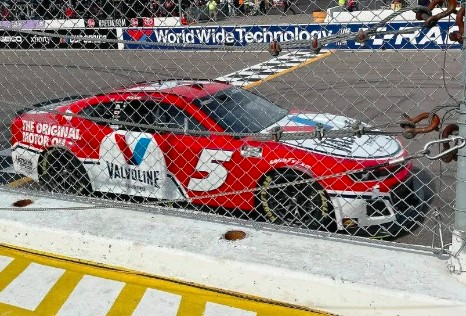
Navigating On-Track Regulations: Safety and Fair Competition
On-track regulations are a critical component of motorsports, governing everything from vehicle specifications to race procedures. These regulations play a vital role in ensuring safety, fairness, and the overall integrity of racing events. In this comprehensive guide, we’ll delve into the world of on-track regulations, exploring their importance, key components, and the impact they have on drivers, teams, and spectators. Additionally, we’ll touch upon the regulations specific to Winchester Speedway, a renowned racing venue with its own set of rules and guidelines.

Understanding On-Track Regulations
On-track regulations encompass a wide range of rules and guidelines designed to govern the conduct of participants and ensure the safe and orderly conduct of racing events. These regulations are established by governing bodies such as sanctioning organizations, race tracks, and series organizers and cover various aspects of racing, including:
- Vehicle specifications and safety requirements
- Race procedures and formats
- Driver conduct and sportsmanship
- Technical inspections and scrutineering
- Penalties and disciplinary actions
The Importance of On-Track Regulations
On-track regulations serve several important purposes within the motorsports community:
Safety
Safety is paramount in motorsports, and on-track regulations are designed to minimize the risk of accidents and injuries. Regulations governing vehicle design, equipment, and track safety ensure that drivers and spectators are protected from potential hazards.
Fair Competition
On-track regulations help maintain a level playing field for all competitors by establishing standards for vehicle performance and conduct. By enforcing rules against unfair advantages such as illegal modifications or unsportsmanlike behavior, regulations ensure that races are decided based on skill and strategy rather than technical violations.
Integrity
On-track regulations uphold the integrity of the sport by deterring cheating, rule violations, and other forms of misconduct. By enforcing penalties for infractions and conducting thorough inspections and scrutineering, regulators uphold the spirit of fair competition and sportsmanship.
Key Components of On-Track Regulations
On-track regulations typically cover the following key areas:
Vehicle Specifications
Regulations dictate the specifications and configurations of vehicles eligible to compete in a particular series or class. This includes rules regarding engine displacement, weight limits, aerodynamic modifications, safety equipment, and more.
Race Procedures
Regulations outline the procedures for conducting races, including qualifying sessions, starting procedures, race formats (e.g., sprint races, endurance races), pit stop rules, and flag signals used to communicate with drivers during the race.
Driver Conduct
Regulations govern the behavior and conduct of drivers both on and off the track. This includes rules against aggressive driving, blocking maneuvers, unsportsmanlike conduct, and penalties for on-track incidents such as avoidable collisions.
Technical Inspections
Technical inspections ensure that vehicles comply with regulations and safety standards before being allowed to compete. Inspectors examine various components of the vehicle, including chassis, suspension, brakes, and safety equipment, to verify compliance.
Penalties and Disciplinary Actions
Regulations establish penalties for rule violations, ranging from fines and grid penalties to disqualifications and suspensions. Penalties are applied based on the severity of the infraction and may include points deductions or financial sanctions.
On-Track Regulations at Winchester Speedway
Winchester Speedway, located in Winchester, Indiana, is a historic racing venue with its own set of track regulations governing events held at the track. These regulations are enforced by track officials and may include specific requirements related to vehicle specifications, race procedures, and safety protocols.
Conclusion: Upholding the Spirit of Motorsports
On-track regulations are essential for ensuring the safety, fairness, and integrity of racing events. By establishing clear guidelines and standards for vehicle specifications, race procedures, and driver conduct, regulations uphold the spirit of motorsports and provide a framework for competitive and exciting racing action.
As motorsports continue to evolve, it’s essential for regulators, track officials, and competitors to collaborate in developing and enforcing on-track regulations that prioritize safety, fairness, and the overall enjoyment of participants and spectators alike. By adhering to these regulations, the motorsports community can continue to thrive while upholding the rich traditions and values of the sport.
